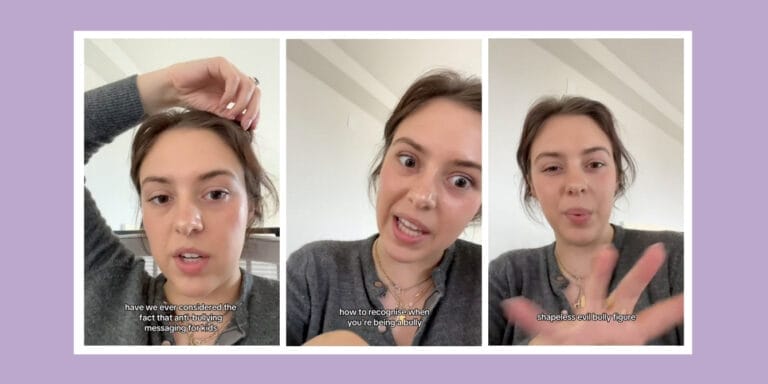This Sesame Street video is helping kids with autism get comfortable with masks

"That's how we keep everybody healthy and safe."
The coronavirus pandemic has disrupted the lives of children across the world, changing the way they learn, play, and live. One of the most visible signs of all those changes is the constant need to wear masks. Keeping one on all day can be a challenge for any kid, but it can be even more difficult for kids with disabilities.
But now, Sesame Street is trying to make that a little easier, with a helpful explainer starring Julia—the sweet and funny little puppet who just happens to have autism.
The cute clip starts with Julia excitedly video chatting with her dad about a trip to the park. When her dad reminds her that she’ll have to wear a mask. “That’s how we keep everybody healthy and safe,” he explains. But Julia becomes upset—complaining that they bother her ears and tickle her nose.
Fluffster Wears a Mask
www.youtube.com
The solution? Plenty of practicing with Julia’s stuffed bunny Fluffster, who’s a champion mask wearer. Julia dons her mask, complete with a painted on bunny nose to match her fuzzy friend. They practice putting it on, keeping it on, and asking to take it off when it becomes too much—explaining that it’ll become a little easier each time. It’s a simple lesson that can be beneficial to all kids, whether they’ve got special needs or not: new things like wearing masks can be nerve-wracking, but introducing them slowly and gently can help demystify them.
The CDC recommends kids over the age of 2 wear masks in any public setting to help stop the spread of the coronavirus, but acknowledges that there are “instances when wearing a mask may not be feasible.” Any parent of a child with delays or disabilities will likely agree with that assessment. A child with learning disabilities may not be equipped to understand the reasoning behind wearing a mask, and a kid with sensory issues may not be able to stand the sensation of a mask on their face. Videos like the one starring Julia can help meet kids on their level, and build up their tolerance for face coverings over time.
Experts agree with the approach laid out in the video—practice makes perfect. Other tips recommended by the Harvard Health Blog include:
- Allowing kids to choose their own mask
- Making practice outings to calm environment
- Chewing gum or candy while wearing the mask
- Taking a photo of the child in a mask to use as a visual cue when it’s time to put it on
The need for masks likely won’t be going away anytime soon, unfortunately. Coronavirus cases are surging in the U.S., and the upcoming holidays could make it even worse. Parents of special needs kids might be feeling more urgency than ever to make sure their children are protected, which is all the more reason for the rest of us to lead by example and mask up.


































